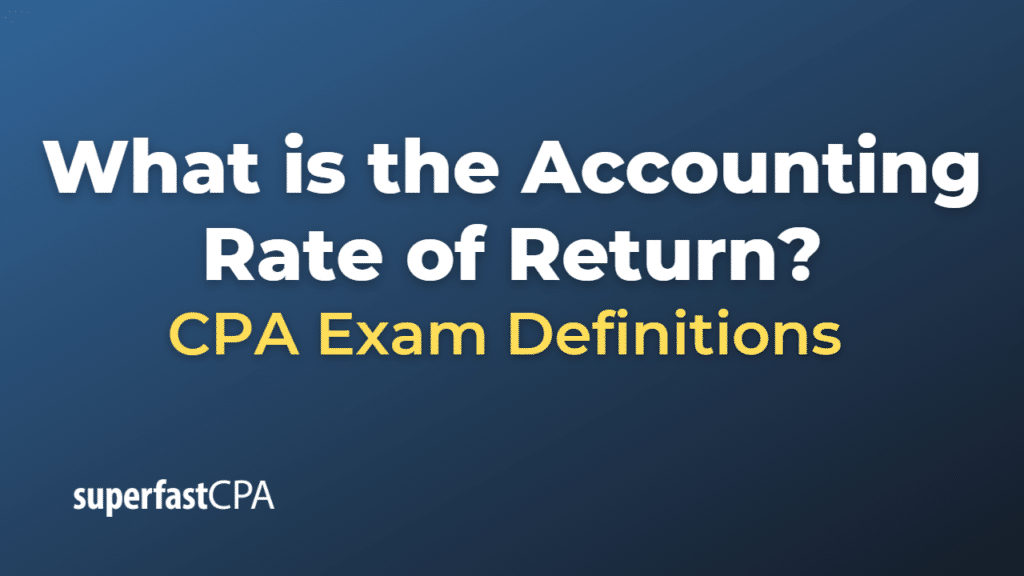Accounting Rate of Return
The Accounting Rate of Return (ARR), also known as the Average Rate of Return or the Simple Rate of Return, is a financial metric used to evaluate the profitability and attractiveness of an investment or project. ARR measures the expected average annual accounting profit generated by an investment, expressed as a percentage of the initial investment or average investment.
ARR is primarily used in capital budgeting and investment analysis to compare different investment opportunities, determine the potential return on investment, and make informed investment decisions.
The formula for calculating ARR is as follows:
ARR = (Average Annual Accounting Profit / Initial Investment or Average Investment) x 100
It’s important to note that ARR has some limitations. Firstly, ARR is based on accounting profit rather than cash flows, which can be affected by accounting policies and estimates. Secondly, ARR does not take into account the time value of money, which means that it does not consider the fact that a dollar received today is worth more than a dollar received in the future. Due to these limitations, other metrics such as Net Present Value (NPV) and Internal Rate of Return (IRR) are often used in conjunction with ARR for a more comprehensive investment analysis.
Despite these limitations, ARR can provide a simple and intuitive way to compare the profitability of different investment opportunities, allowing decision-makers to identify projects with higher expected returns and make more informed investment decisions.
Example of Accounting Rate of Return
Let’s consider a hypothetical example where a company is evaluating two investment projects, Project A and Project B. The company wants to compare the profitability of these projects using the Accounting Rate of Return (ARR).
The following information is available for both projects:
Project A:
- Initial Investment: $200,000
- Expected Annual Accounting Profits for five years: $50,000, $60,000, $40,000, $30,000, and $20,000
Project B:
- Initial Investment: $150,000
- Expected Annual Accounting Profits for five years: $40,000, $30,000, $20,000, $30,000, and $30,000
First, we need to calculate the average annual accounting profit for each project:
Project A: Average Annual Accounting Profit = ($50,000 + $60,000 + $40,000 + $30,000 + $20,000) / 5 = $40,000
Project B: Average Annual Accounting Profit = ($40,000 + $30,000 + $20,000 + $30,000 + $30,000) / 5 = $30,000
Next, we’ll calculate the ARR for each project using the formula:
ARR = (Average Annual Accounting Profit / Initial Investment) x 100
Project A ARR: ARR = ($40,000 / $200,000) x 100 = 20%
Project B ARR: ARR = ($30,000 / $150,000) x 100 = 20%
In this example, both Project A and Project B have an ARR of 20%, which means that they are expected to generate the same average annual return on investment based on accounting profits. While ARR can be a useful starting point for comparing the profitability of different projects, it’s essential to consider other factors such as the time value of money and cash flows. As a result, the company may also want to use other investment appraisal techniques, such as Net Present Value (NPV) or Internal Rate of Return (IRR), to make a more informed decision about which project to invest in.













